How To Replace A Habit
HOW TO REPLACE A HABIT (ISSUE 150) OCTOBER 14, 2014
By Diane Gold
How to replace a habit is an age old idea with lots of answers. Having been trained in the martial arts, I see the answer as martial arts 101: be patient, be focused, be immediate and be consistent.
THE HABIT
The habit cycle I’ve mentioned often, along with Charles Duhigg, author of The Power Of Habit, Leo Babauta, the author of zenhabits.net, medical doctors and psychologists who clinically study how we are the ways we are and lots of others who know it from the inside out.
Just to review, the habit is the culmination of a repetition of the following:
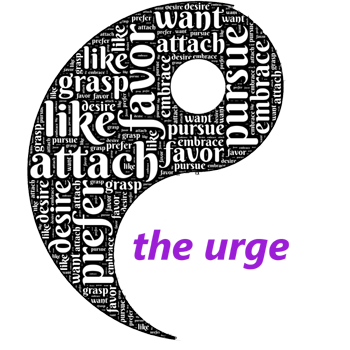
The Urge
The Behavior To Satisfy The Urge
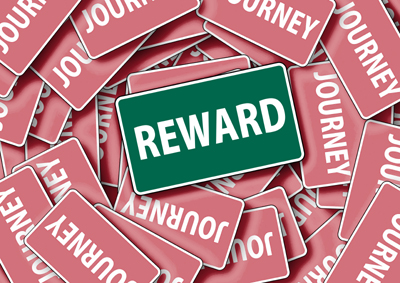
The Reward
THE HARMLESS HABIT
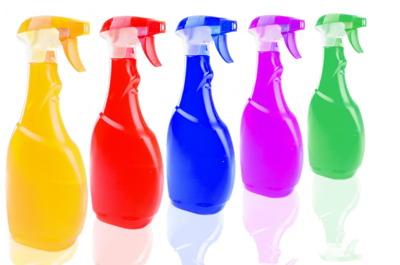 Picture a nice hot summer day at the beach with friends. Someone hands out a pretty, colored spray bottle filled with water to each person. In a playful crowd, it will take little time for someone to get a playful desire (the urge) to depress the lever of the spray bottle (the action) which would result in an expulsion of water on our friends (the reward). On a hot, sunny day, this would be harmless and probably welcome.
Picture a nice hot summer day at the beach with friends. Someone hands out a pretty, colored spray bottle filled with water to each person. In a playful crowd, it will take little time for someone to get a playful desire (the urge) to depress the lever of the spray bottle (the action) which would result in an expulsion of water on our friends (the reward). On a hot, sunny day, this would be harmless and probably welcome.
If this group goes to the beach all the time and brings spray bottles, they could all develop the habit of seeing who could spray whom first. This is the development of a habit. Because habits remain with us, if this group does not see each other for 20 years, and they finally meet at the beach with spray bottles; it will take them all but 10 seconds to start spraying each other again.
THE UNSUPPORTIVE HABIT
Not all habits are so innocent. Some are toxic and destructive, and we want to replace them. Picture eating too much, deliberately throwing up what we eat, doing drugs and alcohol, biting nails, cutting school, eating junk food and a whole lot more.
If we continue to do any one of these behaviors over and over again, we develop a habit that does not support a responsible and healthy life. Everyone has habits. Some of us are prone to unsupportive ones. Those of us who have these unsupportive habits, very often, have multiple of them. Drugs often go with alcohol, which often goes with gambling which often goes with nurturing dependent relationships which often goes with biting nails, and so on.
THE GOOD NEWS
The fabulous news is that, no matter how many unsupportive habits are lurking around, there is a way to replace them, 1 at a time. And the replacement of 1 may positively affect the desire to act out the others.
If you need habit help, go to http://warriorsofweight.com/warriorsofweight-consulting.
ONE TAI CHI STEP AT A TIME
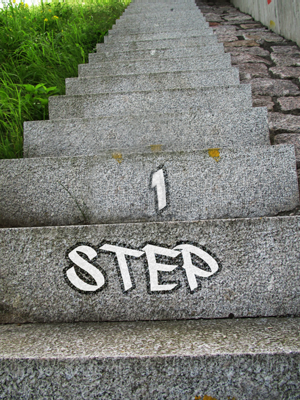 One of the mistakes we all make, at one time or other, is that we decide to take action to wrench something or many things out of our lives. We actually sit around dreaming about being a different being devoid of the habits that are causing us discomfort.
One of the mistakes we all make, at one time or other, is that we decide to take action to wrench something or many things out of our lives. We actually sit around dreaming about being a different being devoid of the habits that are causing us discomfort.
If I’ve learned 1 thing from the joys of tai chi and from replacing unsupportive habits, it is that we can succeed by taking 1 step. It’s counterproductive to take more than 1 step. I know we multitask by being on the phone while driving the car while texting while having a conversation with our passenger. These actions are actually 1 swift and consecutive behavior at a time. But, adding 1 step, with no rush, is the way.
THE FOCUS
Often times, we focus on removing things from our life. As illustrated with the spray bottle example above, as well as by a myriad of scientific research studies, once we develop a habit, it is ours. It makes little sense to focus on removing it when we can replace it. That does not mean that each habit has to be front and center just because we have developed it. It means if we replace our old behavior that caused the unsupportive habit with a new behavior that supports us, we will replace our habit with a new one. Yay!
So, we focus on some new behavior, only 1, repeating this 1 behavior over and over again until this behavior is our new habit.
THE TIMING
What’s so fascinating about habits is that, to replace them, we have between 5 and 15 seconds to act. Any longer than that and we will go back to our old behavior. If we are thinking about elaborate schemes to get rid of our habit or 5 step techniques to beat the habit; we will, unfortunately be stuck in the recidivism loop. Even 2 steps splits the attention. That’s why it’s 1 step to replace a habit Timing Is Everything
But, as we say, timing is everything.
CONCLUSION
How to replace a habit is as simple as 1-2-3, in principle. I know it can feel impossible. That feeling is just a feeling. As we say in kung fu class, when we put you on your knuckles in push-up position and ask you to hang out there, with appropriate form,
“It’s only pain.”
This is another way of teaching us to take 1 action step. If we choose to look at the pain associated with the action, our concentration may falter. If we focus on taking the 1 step only, that is, for the knuckle push up, checking each part of the body while maintaining the flat back position with tight fists, flat knuckles, elbows bent, arms no wider than shoulders, heels together, toes apart; we will succeed. When we act with the pain on the side, we will complete the exercise. If the pain becomes the focus, we have lost our direction.
The same with the new action to replace our habit. If we concentrate on the pain of leaving our old behavior, it is likely we will not do our new behavior. The pain to replace a destructive habit will be there. All we have to do is do our 1 new behavior, our 1 step. Bam! Then, we do our 1 new behavior again. And again and again until it becomes the habit of choice.
The pain will get less. When? In how long? The answer to that is “when it does.” That is not important. What is important is replacing that habit.
Onward, warriors. We are stronger than we think!
ACTION STEPS
1) Know that you will feel pain, and that that is OK and normal.
2) Know that the pain will not stop you, even though it feels excruciating.
3) Know that the mind will make you look at the pain.
4) Remember to laugh that the mind is making you look at the pain.
5) Remember that we have all gone through it, and many of us continue you to go through it daily for the sake of continuing our habit replacement.
6) Remember, you can ask for help from someone who has done it at
http://warriorsofweight.com/warriorsofweight-consulting/
![]()
If you wish to share your story, please hit reply in your email program to be contacted.
![]()
FEEDBACK
We value your feedback very much.
Please leave a comment below.
Please LIKE us on the website at:
http://on.fb.me/1cR3wVW
and on Facebook at:
http://facebook.com/warriorsofweight.
You can also follow us on Twitter @warriorsoweight.
Thanks.
![]()
DIANE GOLD, PUBLISHER AND AUTHOR
Diane Gold, Founder of Warriors of Weight, Turning Habits Into Health, is a mentor in tai chi, kung fu and meditation, a music, fitness and stress expert, dedicated mom, studying plant-based nutrition, peaceful conflict resolution and habit replacement.
She believes we can replace a habit with a directed mind. She says,
“One of the biggest reasons to teach meditation and tai chi at an early age is so that we learn to focus on what we are doing as opposed to focusing on our feelings, the weather, the past, the future.
“In order to change a habit, we need the ability to act without thought. If we haven’t had focus training, this is a hard command.
“From wherever we are at this point in our lives, we can focus on 1 step, bypassing our feelings. The only thing we need to do is take the 1 step. I’m not saying it’s easy. I’m saying we can do it if we just do it.
“I have faith in you and me. I have done it. You can do it.
“Finally, let us all take good care of ourselves because we are so worth it!”
![]()

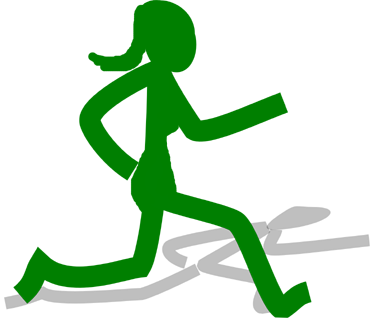
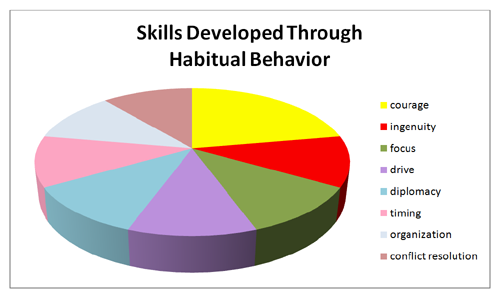
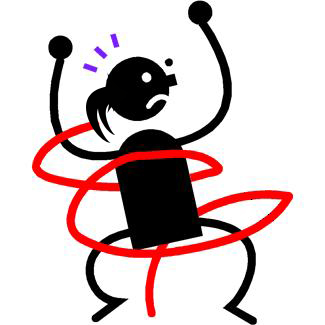 Let’s define habitual behavior as a pattern of action that follows an emotional and/or physical craving that leads to some type of internal intake or ingestion, tick, movement, series of actions, that takes place several times a day, once daily or several times a week, and that, when removed without replacement, causes psychic or physical reaction that can be severely painful. When we change the habit, we actively divert our own attention from the expectation of the old reward we couldn’t live without using the same skill set we created in developing the original habitual behavior; this is how we form a new one.
Let’s define habitual behavior as a pattern of action that follows an emotional and/or physical craving that leads to some type of internal intake or ingestion, tick, movement, series of actions, that takes place several times a day, once daily or several times a week, and that, when removed without replacement, causes psychic or physical reaction that can be severely painful. When we change the habit, we actively divert our own attention from the expectation of the old reward we couldn’t live without using the same skill set we created in developing the original habitual behavior; this is how we form a new one.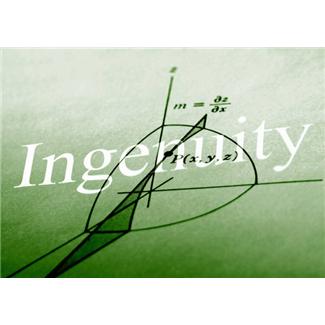 we have ingenuity enough to have devised a way to live with our habitual behavior in our lives,
we have ingenuity enough to have devised a way to live with our habitual behavior in our lives,
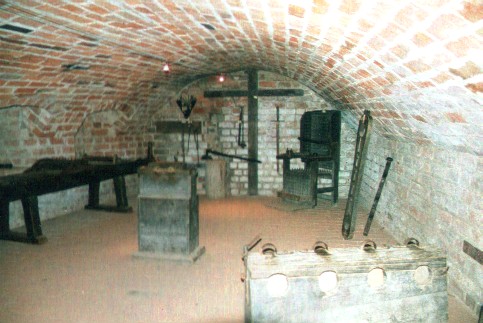 Most of the time, we develop habitual behavior because we experience grief, anger or limited self-esteem. These can come from abuse, crisis, death, sickness and whatever our mind conjures, since feelings are irrational and show up when they show up. Since we have a myriad of valuable skills from our habitual behavior, we are worthy, since worth is calculated by our collection of respectable, attention-getting skills.
Most of the time, we develop habitual behavior because we experience grief, anger or limited self-esteem. These can come from abuse, crisis, death, sickness and whatever our mind conjures, since feelings are irrational and show up when they show up. Since we have a myriad of valuable skills from our habitual behavior, we are worthy, since worth is calculated by our collection of respectable, attention-getting skills.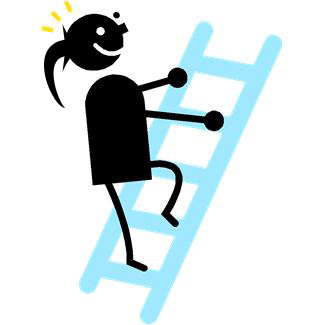
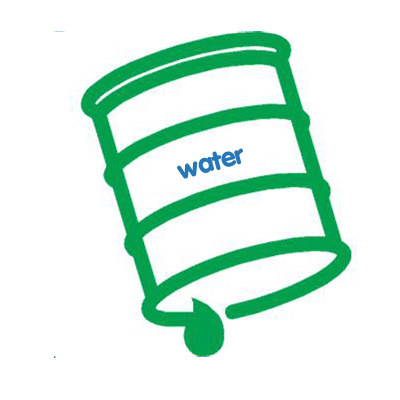 Did you know that a huge amount of our world population does not have enough water or has to walk to get it? According to Kathleen Parker’s article, quoting Charles Fishman’s The Big Thirst (on my pending reading list), we, Westerners, use 18.5 gallons a day flushing our toilets while there is only 1/100th of 2.5 percent fresh water on the planet or, if the oceans were broken down into mass, 2.5% of the Earth’s mass. Not a lot.
Did you know that a huge amount of our world population does not have enough water or has to walk to get it? According to Kathleen Parker’s article, quoting Charles Fishman’s The Big Thirst (on my pending reading list), we, Westerners, use 18.5 gallons a day flushing our toilets while there is only 1/100th of 2.5 percent fresh water on the planet or, if the oceans were broken down into mass, 2.5% of the Earth’s mass. Not a lot. Let’s look at what happens when we start to feel the twinges of hunger. These urges might be immediately after eating, 10 minutes after eating, an hour after, 3 hours apart or more. The amount of time between cravings is a non-judgmental number. The craving begins as an itch, which shows up when it shows up. If we don’t judge ourselves, we won’t be judged! Its intensity determines the level of self-control we need to master it.
Let’s look at what happens when we start to feel the twinges of hunger. These urges might be immediately after eating, 10 minutes after eating, an hour after, 3 hours apart or more. The amount of time between cravings is a non-judgmental number. The craving begins as an itch, which shows up when it shows up. If we don’t judge ourselves, we won’t be judged! Its intensity determines the level of self-control we need to master it.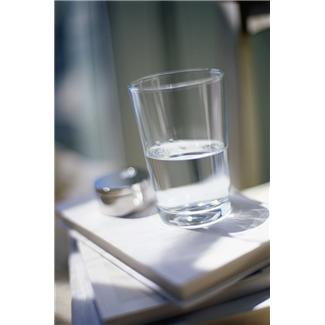 3)
3)
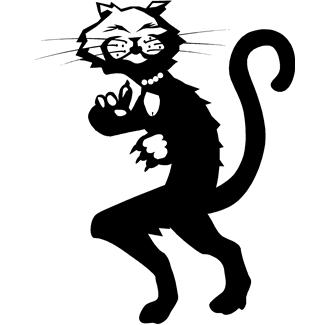 After we begin, it will be get much easier for us to recognize and acknowledge it when we have a food urge. Whereas before, we might have felt we had to sneak to eat, we will no longer have to sneak, since our first line of food defense can be healthy, wonderful water. Whereas before, we might have felt guilty for eating mindlessly, we can feel pride because we are eating as part of a technique.
After we begin, it will be get much easier for us to recognize and acknowledge it when we have a food urge. Whereas before, we might have felt we had to sneak to eat, we will no longer have to sneak, since our first line of food defense can be healthy, wonderful water. Whereas before, we might have felt guilty for eating mindlessly, we can feel pride because we are eating as part of a technique.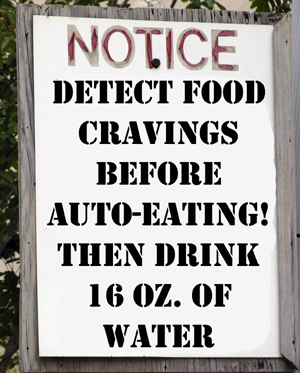 The act of making change takes time and effort. That includes water for weight loss. The biggest effort is in training the mind (changing a habit) that when we have a food craving, we need to embrace it. We need to drink 16 oz. of water, slowly. This is great in theory, but…
The act of making change takes time and effort. That includes water for weight loss. The biggest effort is in training the mind (changing a habit) that when we have a food craving, we need to embrace it. We need to drink 16 oz. of water, slowly. This is great in theory, but… For those of us in the United States and some other countries, we can be extra thankful that we do have water readily available. 2/3 of world families do not (National Geographic Society Geography Awareness Week, 2010). They have to walk to get their water; they have to transport it on shoulders, backs or holding buckets.
For those of us in the United States and some other countries, we can be extra thankful that we do have water readily available. 2/3 of world families do not (National Geographic Society Geography Awareness Week, 2010). They have to walk to get their water; they have to transport it on shoulders, backs or holding buckets.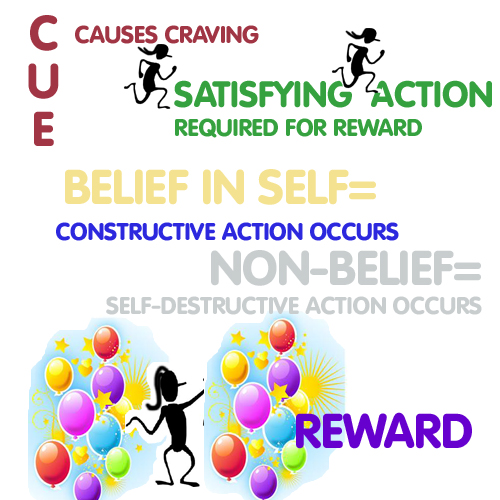
 There are so many cues that result in habitual action. Anything can set off someone who gambles to excess to create gambling by saying,
There are so many cues that result in habitual action. Anything can set off someone who gambles to excess to create gambling by saying, ACTION STEP
ACTION STEP
 After getting poison ivy many times in New York, I thought I was free of it when I moved to Florida. Ha! Little did I know that the precious mango tree that hung over the fence was loaded with the very same toxin. Cashew and pistachio, too, but I haven’t come into contact with those.
After getting poison ivy many times in New York, I thought I was free of it when I moved to Florida. Ha! Little did I know that the precious mango tree that hung over the fence was loaded with the very same toxin. Cashew and pistachio, too, but I haven’t come into contact with those. For years, I have been covering the dermatitis rash with bandages. This was for 2 reasons: 1) to keep the rash from spreading when the blisters broke and 2) to keep me from scratching it.
For years, I have been covering the dermatitis rash with bandages. This was for 2 reasons: 1) to keep the rash from spreading when the blisters broke and 2) to keep me from scratching it. The belief part of the equation comes from inside. We need to believe in ourselves to get the job done because we must be strong enough to remember our self-examination. Statistics say this is done in a group, even if it is a group of 2.
The belief part of the equation comes from inside. We need to believe in ourselves to get the job done because we must be strong enough to remember our self-examination. Statistics say this is done in a group, even if it is a group of 2. ACTION STEP
ACTION STEP





